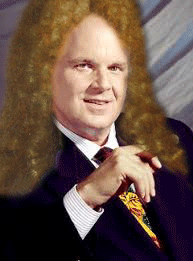 |
| General James Longstreet |
They both served their country, they were both Republicans, and they were both born in Edgefield County , South Carolina
On the surface, they seem mighty similar. But on closer inspection, they are radically different.
James Longstreet was second in command to Robert E. Lee at the Battle of Gettysburg. While he highly respected his superior, Longstreet held a different philosophy regarding war tactics. He petitioned strenuously for Lee to move to a defensive position between the Union Army and Washington , D.C.
Lee was an aggressive leader who, like General George Patton of World War II, had much success, yet high casualties. These traits did not serve him well in this pivotal battle. Analysts believe his command style did not suit the situation at Gettysburg
Longstreet was reluctant to lead an assault he did not believe in, and reportedly asked to be replaced, but Lee refused. The "Gettysburg" film clip below shows Longstreet’s vision of what has become known as Pickett’s Charge. A vision that proved devastatingly true.
After the war, Longstreet committed the unpardonable sin in the eyes of the “Lost Cause Movement,” which romanticized the Confederacy. He publicly criticized Lee’s leadership at Gettysburg
 |
| Longstreet's statue at Gettysburg |
In 1998, the above statue of James Longstreet was one of the last to be erected. Compare it to that of Robert E. Lee. Rather than set upon a massive pedestal as are most generals' statues, it is tucked into the trees and at ground level.
 |
| Robert E. Lee |
I wonder which took more courage for Longstreet—fighting the horrific battles of the Civil War or daring to hold unpopular beliefs among his own people.
Strom Thurmond, Longstreet’s fellow native son of Edgefield, fathered a black daughter while he labored to obliterate civil rights for African-Americans. Who showed integrity? Who pandered to white racist fears for his own advancement?
I know whom I admire.









